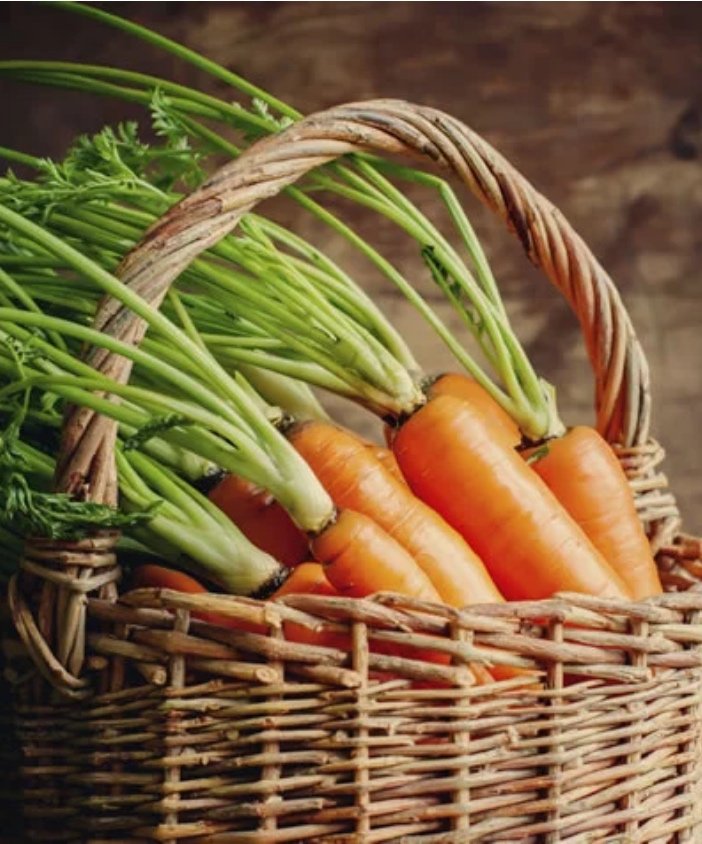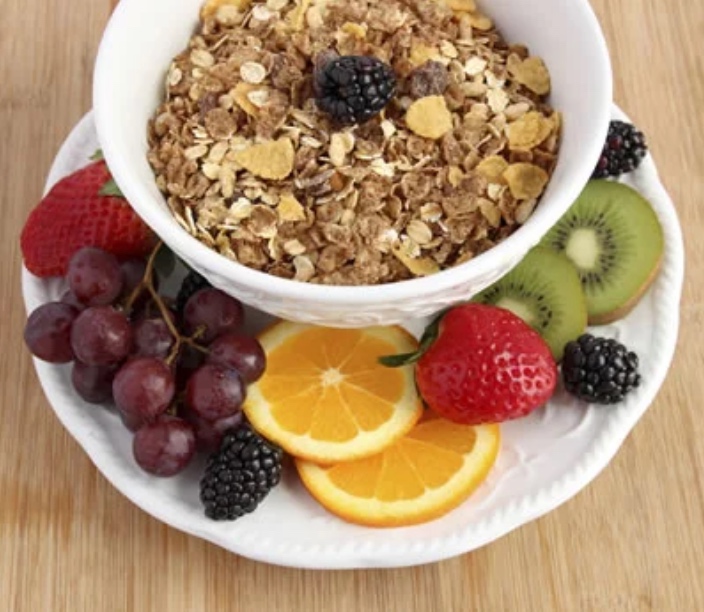Sara Waxman, OOnt, is an award-winning restaurant critic, best-selling cookbook…
To help you choose good carbs vs bad carbs — healthful carbs instead of hyperprocessed, hypercalorie carbs — here are 5 key tips:
1. Don’t bother with the glycemic index or glycemic load.
Basing your diet on a food’s glycemic index (GI) or glycemic load is confusing, and sometimes downright wrong. (You shouldn’t eat carrots because they have a high GI? Carrots?!)
Major research agrees. In one study, for example, of more than 284,000 people that looked at whole grain consumption and risk of type 2 diabetes, researchers found that the more whole grains people ate, the lower their risk for type 2 diabetes.
What’s interesting is that as whole grain consumption rose, the glycemic load rose as well, but who cares if the end result was less diabetes and better health?
That’s precisely what happened in this huge study. A higher intake of whole grains in place of refined grains was linked with lower weight and lower risk of diabetes, and having a high glycemic load did not undo these very important benefits.
Published, too, was an exhaustive review of 140 studies on carbohydrate intake and body mass index (BMI). Its findings: There was no connection between the glycemic index and BMI. The University of Virginia scientists concluded that people should not concern themselves with the glycemic index.

What was linked with lower BMIs, the researchers found, was high-carbohydrate diets – good carbohydrates. A low-fat dietary strategy with emphasis on fiber-rich carbohydrates like fruits, vegetables, and whole grains is “beneficial for health and weight control,” the scientists recommended.
Similarly, in another study on overweight adults placed on diets with varying amounts of whole, natural carbohydrates, scientists from the Harvard School of Public Health found that those on the high-carb, high-GI diet actually fared better than those on the low-carb/low-GI diet.
For improved insulin sensitivity and cholesterol levels, the researchers concluded that what matters most is an overall healthy dietary pattern based on whole, natural foods like fruits, vegetables, whole grains, beans, and fish. The glycemic index is not worth worrying about, summed up Dr. Robert Eckel of the University of Colorado in an accompanying editorial.
2. Don’t get sidetracked by single ingredients. It’s the whole food that counts.
In recent years, for example, there’s been a crusade against high-fructose corn syrup. It’s been called “the Devil’s candy” and “the crack of sweeteners.” Food processors are now bragging that they’ve switched from high-fructose corn syrup to plain old sugar in soft drinks and other processed foods.
But it’s difficult to see how there’s any difference between high-fructose corn syrup and sugar (sucrose). Both are half fructose and half glucose. And research has found high-fructose corn syrup had the same impact as sugar on blood sugar, insulin, and hormones that affect appetite.
Soft drinks, whether made with sugar or high-fructose corn syrup, are liquid calories. And liquid calories are a big problem if you’re trying to lose weight because they go down oh-so easily, and sadly, most of us don’t compensate for all those extra calories by eating much less food later in the day.
3. Eat foods naturally high in fiber, not foods labeled “high in fiber” because fiber was added to them.

There’s a lot of this going on lately, especially in the bread and cereal aisles. Products are full of heavily processed, refined grains (yes, bad carbs) but boast that they’re fiber-rich because wheat brain or another isolated bran has been added to them.
The problem is: The many studies that have linked fiber-rich foods with health benefits were based on foods naturally rich in fiber – that’s right, good carbohydrates like 100% whole-grain cereals, fresh fruits, fresh vegetables, and bean-rich soups. Scientists don’t know if fiber that has been added has the same effect.
And we have plenty of reason to doubt that it would. What did adding oat bran to everything from muffins to mayo in the 1980s get us? Any single substance, including fiber, is just one of thousands found in whole foods. Isolating one of them, as we’ve done with supplements like beta carotene, does not work, and may even do damage. Studies have found that beta carotene supplements actually increased the risk of certain cancers.
So stick to the real thing. Our bodies have a longstanding relationship with whole grains, not stripped grains that have been injected with a little wheat bran. To ensure you’re getting the real thing in the supermarket, buy bread, pastas, and other grain products that show as their first ingredient whole grain, such as whole-wheat flour or sprouted whole-grain kernels.
And see what else is in that ingredient list. Whole grains won’t do you much good if they’re mixed with molasses, honey, sorbitol, and other simple sugars, or if the product has a lot of sodium, which many breads do.
4. For losing weight, go easy on flour, even whole-grain flour.

To shed pounds, first focus on fruits and vegetables. Make sure you’re enjoying at least nine servings daily. Yes, lots of them! Ounce for ounce, veggies and fruits have more nutrients and fewer calories than anything else.
As you learn at Pritikin, round out your daily diet with legumes (beans), seafood, starchy vegetables like potatoes, yams and corn, nonfat dairy foods, and whole grains.
But for losing weight, some whole grains are good for you. And some you’ll probably need to limit, or you’ll take in too many calories.
The good-for-weight-loss whole grains are those, like brown rice, whole oats, and unhulled barley, that have not gone through the grinding, or processing, of their kernels into flour. These whole grains, when cooked, have only about 500 calories per pound, which means you can eat them until comfortably full without worrying about eating a lot of calories.
The not-good-for-weight-loss grains are those, like whole-grain breads, whole-grain bagels, and whole-grain crackers and chips, in which the kernels have been ground into flour. When this processing happens, the product is much more calorie dense.
Whole-grain breads have a calorie density of around 1,200 to 1,500 calories per pound. Whole-grain, fat-free chips are 1,600 to 1750 calories per pound. That’s right, ounce for ounce, you’re getting about three times as many calories than if you were eating unground, unprocessed whole grains.
And do those ounces disappear quickly. Think about it. In minutes, we can easily put away five slices of whole-wheat bread. Five bowls of oatmeal? No chance.

Another way to think about it is “dry” versus “wet.” Highly processed, ground whole grains are all dry grains, which makes them more compact (and less filling). By contrast, unground grains like whole oats and brown rice are cooked in water (therefore wet). The water adds bulk and a lot more stomach-filling satisfaction, but not more calories.
One exception to the “flour rule,” points out Pritikin Director of Nutrition Kimberly Gomer, is whole-wheat pasta. “That’s because whole-wheat pastas are not consumed dry, and the processing tends to slow their digestion compared to breads, crackers, pretzels, and dry cereals. So whole-wheat pastas leave you feeling satiated on fewer calories. Of course, combine the pasta with veggies and a tomato sauce, and it’s even better for losing weight.”
Keeping your stomach full and happy is a very good thing because it helps keep you from going places you don’t want to go.
5. Enjoy home life more (and restaurants less).
One of the best ways to achieve optimal health and escape our obesity-causing culture of fast foods and bad carbs is to eat at home more often. Put a huge platter of fresh fruit and veggies on the kitchen table. Eat everything in it every day. Replenish it every day. If you can, plant a vegetable garden.
If you can’t, go grocery shopping. And it doesn’t have to be a health food store. Anywhere in America you can get whole, healthful foods like fresh fruit, fresh vegetables, potatoes, brown rice and other whole grains that you cook, and beans, as well as nonfat dairy foods, fish, chicken, and even lately, very lean red meat like bison.
Just start out in the produce section. Fill your cart halfway with fruit and veggies. Now, you’re on the Pritikin track.

Better yet, visit your local farmer’s market, where you’ll find wonderfully good carbs (no added sugars, salts, or fats) picked at their peak of flavor. Yes, the very same food your great-great grandmother would have recognized as food.
When you return home, retreat to the kitchen away from the stresses of the day. Lose yourself in the joy of your own cooking. Then sit down to a meal that’s tremendously good, and tremendously good for you, carbs and all.
Sara Waxman, OOnt, is an award-winning restaurant critic, best-selling cookbook author, food and travel journalist and has eaten her way through much of the free world for four decades, while writing about it in books, newspapers and magazines. She is the Editor in Chief of DINE and Destinations magazine.




